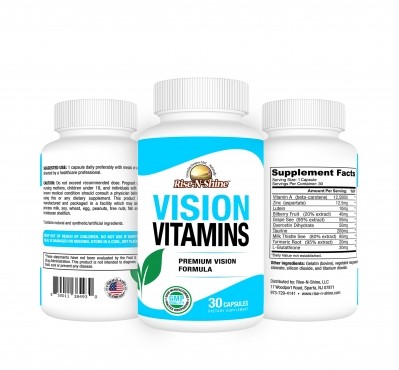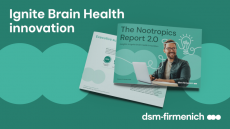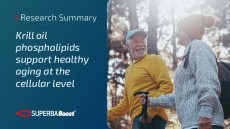Evolving science shifts focus to lutein’s lifelong eye and brain benefits

Supplementation strategies so far have primarily targeted reducing the risk of developing advanced age-related macular degeneration (AMD), with trials like the Age-Related Eye Disease Study 2 (AREDS2) evaluating the effects of lutein and zeaxanthin in a population of 50- to 85-year-old subjects.
But major players in the space are working to raise awareness of the importance of carotenoid consumption (in this case lutein and zeaxanthin, acquired only through dietary sources) for increasing macular pigment optical density as the eye develops across the first years of life.
What has emerged is an evolving understanding of epidemiological factors, synergies and the boundaries that can be pushed to further research needed to optimize vision and brain development in children who are increasingly affected by consumption of nutrient-poor diets and digital blue light.
Lutein across the lifespan
Kemin industries, which supplied the FloraGLO Lutein used in the AREDS2 study, hosted an education session at the recent SupplySide West natural ingredients convention to showcase the growing body of research on lutein in early life.
Entitled “Breaking Boundaries in the Science of Lutein Across the Lifespan”, it brought together leading researchers in the field including Dr. Paul Bernstein and Emmanuel Kofi Addo from the University of Utah, Dr. Carol Cheatham from the University of North Carolina at Chapel Hill and Dr. Naiman Khan from the University of Illinois Urbana-Champaign.
The two researchers from the Bernstein Lab opened the session with findings from a first prospective study on supplementation during pregnancy using a prenatal vitamin supplied by Kemin that contained docosahexaenoic acid (DHA), lutein and zeaxanthin (based on carotenoid dosage in AREDS2). Outcomes supported the potential to improve ocular and general health in both mother and child, and more studies are planned into the effects on cognitive and visual function in three-to-five-year-olds, as well in poorly nourished populations and on pathologies of high-risk pregnancies.
In her presentation, Dr. Cheatham emphasized the importance of synergy, whether in colocalization of nutrients in mangos, breast milk or the intercellular space in the brain. She shared her lab’s mantra “Nutrients that lurk together are working together” along with research showing the collaborative role of lutein, DHA and choline in brain processing speed in six-month-olds.
Looking ahead, she stressed the need for more research into the associations found between visual acuity and cognitive function, noting: “Whether it’s collaboration or competition, I don’t care, let’s just get the data.”
Dr. Khan reinforced the importance of carotenoids in childhood nutrition, referencing collaborative research into the positive associations between macular carotenoids and cognitive function in pre-adolescent children and the ongoing Integrated Childhood Ocular Nutrition Study (iCONS). His center is also conducting the Early Life Influences on Attention Study (ELIAS) in toddlers focused on the relationship between infants’ eating and their cognitive and motor development over time.
“The reason we are interested in this age group in particular is that we know that breast milk is essentially super nutrition, and formula tries its best to imitate it,” he said. “And what often happens in babies is that they go from [this super nutrition] to hot dogs and French fries.”
Filling the gap
OmniActive Health Technologies, which introduced Lutemax 2020 in 2009 for eye health in adults, also highlighted its advancing lutein science this year at SupplySide West, previewing results from a six-month study carried out in 60 children aged 5-12 years old.
Deshanie Rai, vice president of global scientific and regulatory affairs at OmniActive, explained that the company’s research agenda is driven by consumer health needs and identifying the gaps, as well as the work of academic experts ranging from AREDS2 to the Bernstein Lab’s recent prenatal research.
“The gap though was children—whether lutein and zeaxanthin supplementation have any impact from a vision and cognitive performance perspective in children,” she said. “OmniActive realized that the gap was children, and we addressed it through our clinical study. We believe in the public domain it is the first clinical study to be done in children with supplementation of lutein and zeaxanthin.”
Results of the study (using 10 mg lutein and 2 mg zeaxanthin isomer) echo conclusions from OmniActive’s research on the eye-brain connection in adult populations, associating increased carotenoid plasma and macular pigment levels with supplementation. It also showed measurable visual and cognitive performance benefits including increased visual processing speed, reduced eye strain and fatigue from digital device use, and improved attention, focus and episodic memory.
“We know that during this age period, vision and cognitive processes are still actively developing, and it is compelling to note that supplementation with key nutrients can help play a role,” Dr. Rai added.
Asked whether lutein and zeaxanthin should be granted essential nutrient status, she said the industry is collaborating with academic scientists “all holding hands together” to see how to positively influence the Institute of Medicine and the National Institutes of Health.
“We cannot afford to wait in my opinion from a public health perspective—it’s not something we should even ponder,” she added. “We need to be at the forefront of educating our consumers and our healthcare professionals on the relevance of these nutrients.”
Lutein for every age
To raise awareness, OminiActive relaunched its consumer-facing “Lutein for Every Age” education campaign in September timed to the beginning of the school year. It pairs health advisors with parent surveys to highlight the knowledge gaps around children’s nutritional needs (including lutein and zeaxanthin as solution) for maintaining optimal eye and brain health through all life stages.
“Through our 'Lutein for Every Age' initiative, we aspire to illuminate the path to healthier eyes and sharper minds for the next generation,” Adam Adelmann, chief commercial officer at OmniActive said following the launch. “We want to inspire families with the knowledge and tools they need to build healthier futures for their children.”
At SupplySide West he added that there is not only a real need but opportunity in a category where consumers are reaching for products for eye health that represent just 1.5% of the total market.
“If you get that to 2.5% consumption of products, all boats will rise in a high tide,” he said. “Anybody that is out in our space trying to promote eye health, it doubles the business. If you look at it from a commercial perspective, that’s the amount of lift you get out of that small incremental change in consumer consumption.”















